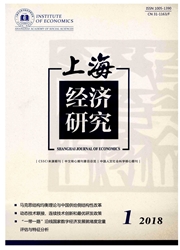

 中文摘要:
中文摘要:
本文利用投入一产出表数据测算并比较了1992年以来全国、广东和江苏中间消耗水平的结构性变化,通过对各地三大产业部门直接消耗系数的对比和将技术进步、结构转换从劳动生产率中分解开来,发现二者对降低中间消耗和促进当地经济增长的贡献具有较大的区际差异。横向对比来看,技术进步对降低中间消耗和提高经济增长效率的贡献比结构转换的贡献要高;但动态变化来看,在现有的产业结构状态下技术进步对经济增长的贡献有衰减的迹象。为此,要实现区域统筹协调和“保增长、调结构、促改革、惠民生”的战略目标,必须优化产业结构并提高服务业尤其是生产者服务业占GDP的比重。同时要加快核心区向外围的区际知识溢出和行业的技术标准、技术范式的转换。
 英文摘要:
英文摘要:
In the paper, we compared the structural characteristics of intermediate consumption among the whole China, Guangdong and Jiangsu Province with the data of input-output tables from 1992. And with the time series of direct consumption coefficient matrix, we investigate how technical progress and industrial restructure influence intermediate consumption. After then, we measure and compare the effect of technical progress and industrial restructure on productivity and its trend. The empirical study shows that technical progress contributes much more to reducing the level of intermediate consumption and improving the efficiency of inter-regional economic growth than that of industrial structure transformation; however, the role played by technical progress on economic growth is decreasing. Therefore, in order to achieve a sustained economic growth on the post-crisis era, we must strengthen the transformation of technological standard and its rule as well as enhancing the ratio of service sector in GDP to optimize industrial structure.
 同期刊论文项目
同期刊论文项目
 同项目期刊论文
同项目期刊论文
 期刊信息
期刊信息
